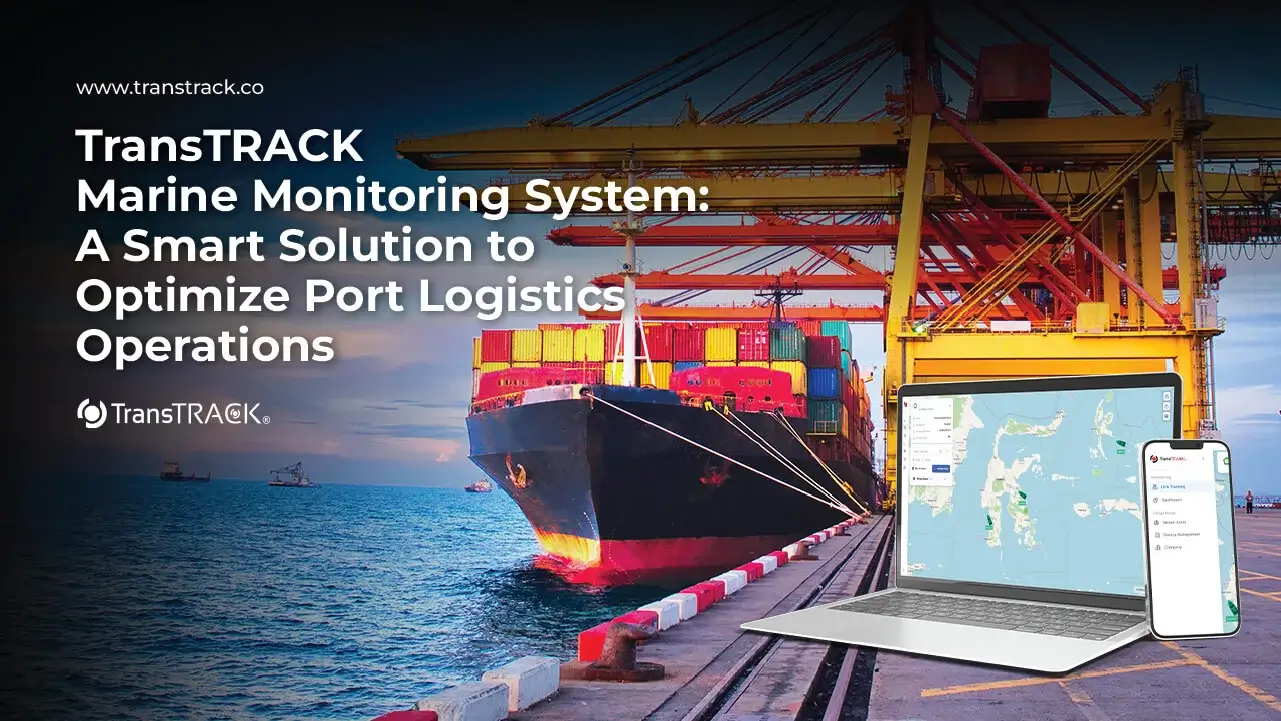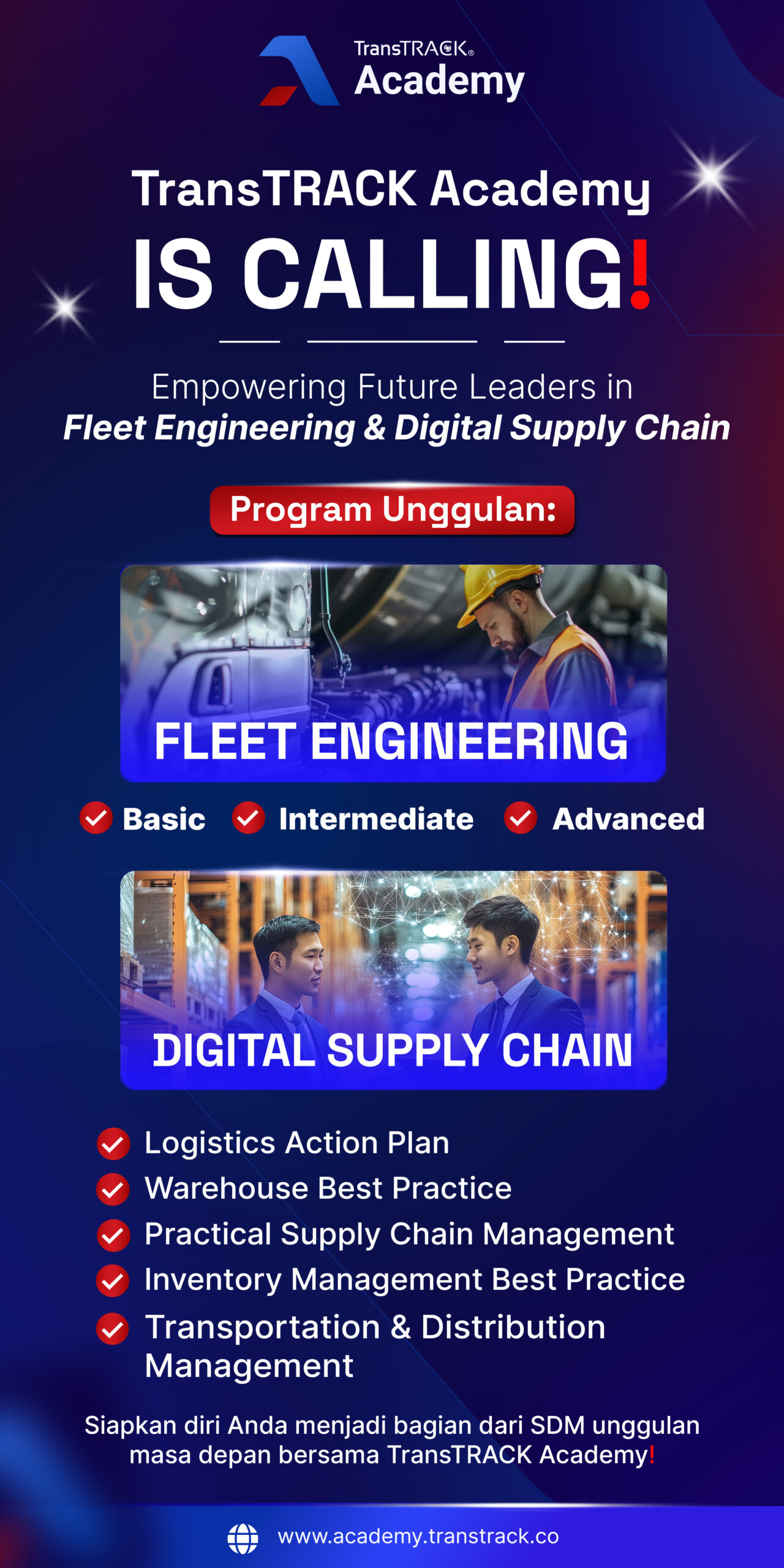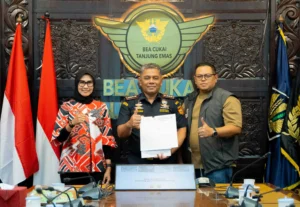TransTRACK Marine Monitoring System: A Smart Solution to Optimize Port Logistics Operations
Posted on April 28, 2025 by Nur Wachda Mihmidati

In the port logistics industry, challenges such as congestion, lack of transparency, and inefficiencies in managing loading and unloading schedules often hamper smooth operations. As the global need for efficiency and speed grows, technology now plays a pivotal role in modernizing and optimizing these processes.
The Marine Monitoring System from TransTRACK comes as an innovative solution to the challenge. By using real-time monitoring systems and better integration between marine and land fleets, TransTRACK can change the way ports manage their logistics, improving coordination, reducing lead times, and maximizing operational capacity.
Let’s take a deeper dive into how this technology can bring significant changes to the smooth operation of ports in the future.
What is Port Logistics System?
A port logistics system is an integrated system that manages the flow of goods, vehicles, documents, and information in the port area. It aims to speed up the loading and unloading process, simplify administration, improve distribution efficiency, and ensure logistics security and transparency.
Components include:
- Goods and vehicle management
- Digital information system
- Electronic customs documentation
- Security monitoring
- Integration with land transportation
This system is essential for ports to work faster, more efficiently and competitively.
Challenges in Logistics Management in Indonesia’s Port Area
The following are the various challenges in logistics management in Indonesia’s port areas in outline:
1. Congestion and Truck Queues
Port congestion is also a major problem in many of the world’s major ports, such as the Port of Los Angeles in the United States and the Port of Shanghai in China. Long truck queues and limited port access infrastructure slow the flow of goods, result in high operating costs, and exacerbate environmental impacts due to emissions from idling vehicles.
2. Lack of Transparency in the Flow of Goods
In international ports, the issue of lack of transparency often arises due to non-integrated systems between various parties, such as shipping companies, port operators, and transportation service providers. This makes it difficult to track goods in real-time and potentially increases the risk of loss or damage to goods.
3. Inefficiency of Loading and Unloading Schedule
Inefficiencies in loading and unloading scheduling are a major problem in global ports. The mismatch between ship schedules, truck readiness, and dock capacity often causes delays and reduces port productivity. This results in longer transit times for goods and higher global logistics costs.
How Can Technology Help Solve Port Logistics Problems?
There are several ways to solve the port logistics problem, namely with technology developed for the industry at the port. Here are the technologies:
1. Implementation of IoT and Integrated System
Some major ports in Indonesia are starting to implement IoT (Internet of Things) technology and integrated systems to address these issues. For example, smart sensors and digital platforms that integrate data from trucks, containers, and ships enable real-time monitoring. This speeds up the decision-making process and reduces congestion by maximizing the use of existing infrastructure.
2. Digitalization of Fleet Gate-in & Gate-out Processes
The implementation of digital technology such as RFID, ANPR (Automatic Number Plate Recognition), and electronic ticketing system for the gate-in and gate-out process has accelerated the flow of vehicles entering and exiting the port. This reduces queuing time, improves efficiency, and reduces the potential for errors and fraud at the port.
Benefits of Digital System at Port
Here are some of the benefits of a digital system implemented at the port:
- Improves Efficiency Eases coordination between parties and speeds up port operational processes with an integrated management system.
- Transparency and Real-Time Monitoring The use of IoT and smart sensors enables live tracking of goods and containers.
- Digitization of vehicle gate-in and gate-out processes reduces queues and speeds up vehicle turnaround.
- Maximized use of port facilities and reduced wastage of time and cost.
- Enhanced Security Technology-based monitoring systems improve the security of goods and vehicles at the port.
TransTRACK Technology to Solve Problems at the Port
TransTRACK has the technology to overcome all problems in the port sector. One of them is:
- Real-Time Cargo and Container Tracking Allows live monitoring of the location and status of containers and goods as they move through the port, reducing the risk of loss and increasing transparency.
- Vessel Scheduling & Coordination Efficiently schedule vessel arrivals and departures to optimize port traffic flow, reduce congestion, and minimize waiting time.
- Cargo and Vehicle Flow Optimization Optimize the movement of goods and vehicles, ensuring a smooth transition from ship to truck and vice versa, thereby reducing queues and speeding up operations.
- Port-Fleet Integration Integrates marine and land fleets, enabling better coordination between the two types of transportation and speeding up the process of delivering goods.
- Yard and Terminal Management Enables efficient management of warehouse space and tracking of container status within terminals, reducing space wastage and increasing operational capacity.
- Data Analytics and Reporting Uses data to monitor port performance, improve forecasting, and optimize port operations with actionable insights.
- Facilitate seamless communication between all parties involved in port operations, including logistics teams, port authorities, and shipping companies.
- Ensure that port operations comply with customs regulations and international maritime safety standards, reducing the risk of legal violations.
In the increasingly complex world of port logistics, technology is key to improving efficiency and transparency. With the Marine Monitoring System from TransTRACK, ports can address key challenges such as congestion, lack of transparency in the flow of goods, and inefficiencies in loading and unloading schedules. The system offers real-time monitoring, better vessel coordination, as well as more efficient yard and fleet management.

If you want to optimize your port operations, improve coordination between parties, and ensure compliance with international regulations, Marine Monitoring System from TransTRACK is the right solution. Start now, entrust your port logistics management to reliable technology.
Contact us for a live demo and discover how TransTRACK can bring your port operations to a higher level of efficiency.
Recent Post
Topic :
 Bahasa Indonesia
Bahasa Indonesia









